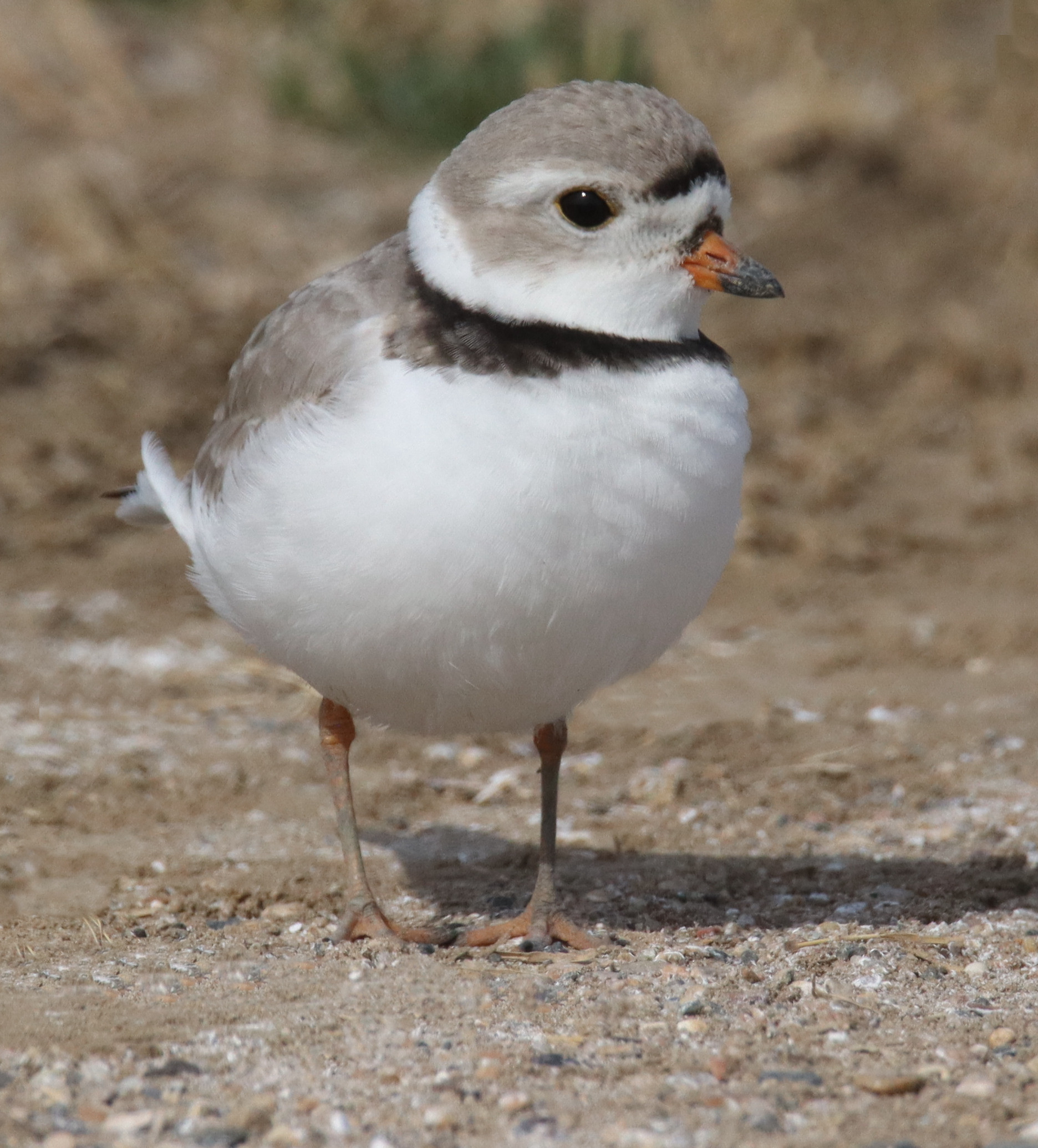
Piping Plovers must rate among the cutest birds, and to see more photographs please refer to the Bird Photography feature in this issue.
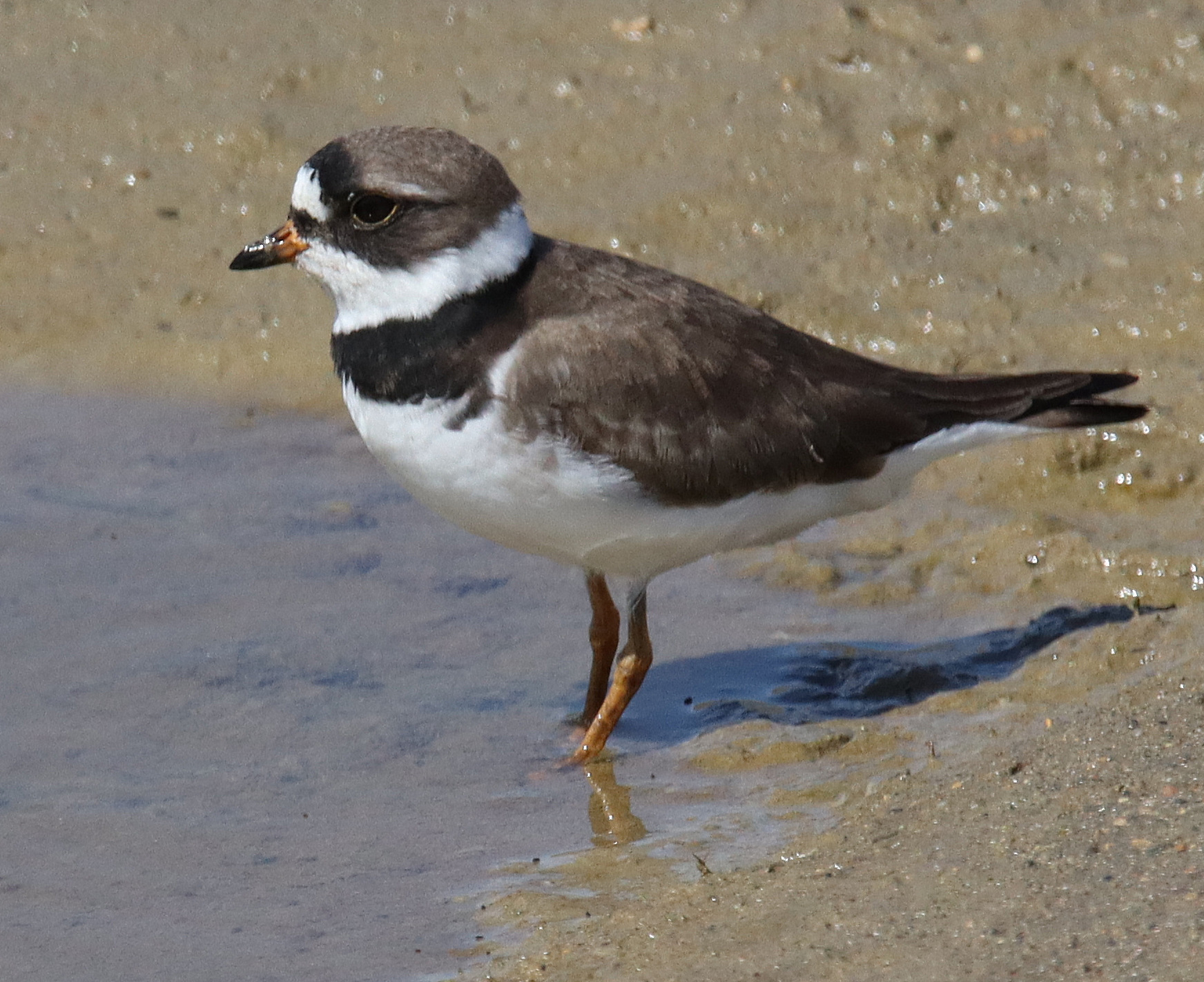
The next plovers to appear were 2 Semipalmated Plovers with very fresh plumage, including anterior plumage that made me want to describe it as chocolate-colored.
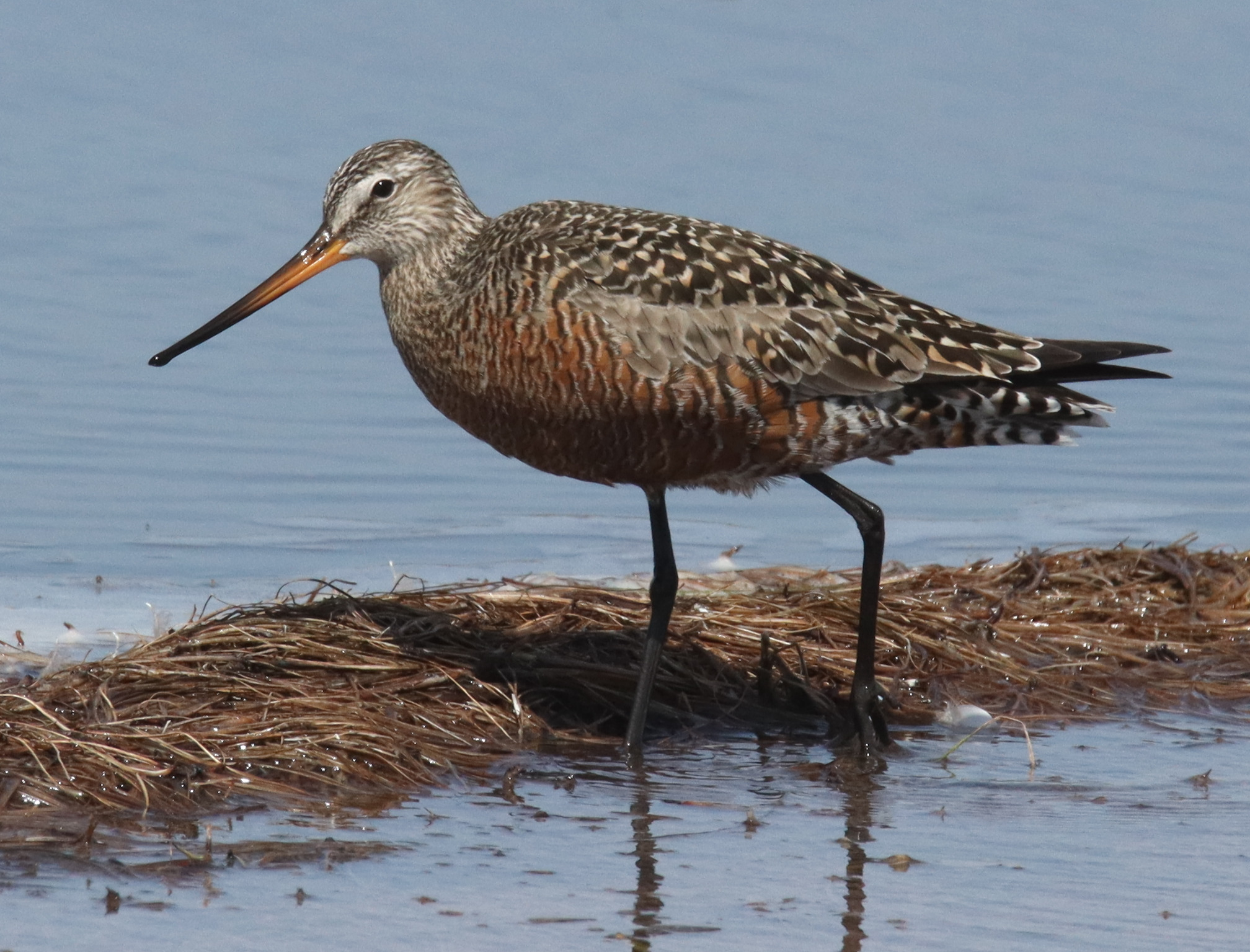
A couple more groups of Hudsonian Godwits showed last Wednesday, adding to the variety of birds on hand and new species arriving this week.
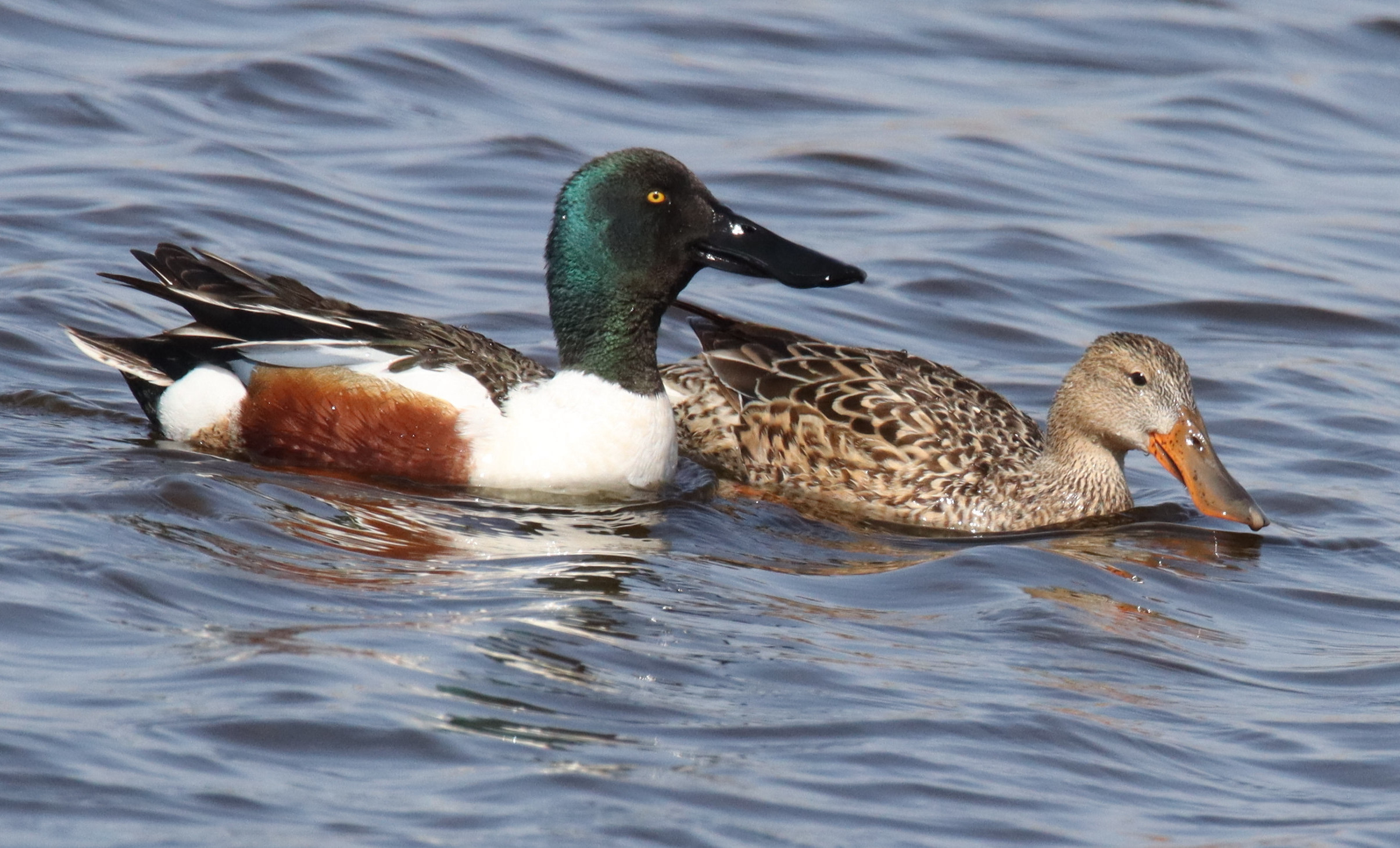
Northern Shovelers have been the most common ducks in the region the past couple weeks, and they have been most actively displaying and pairing.
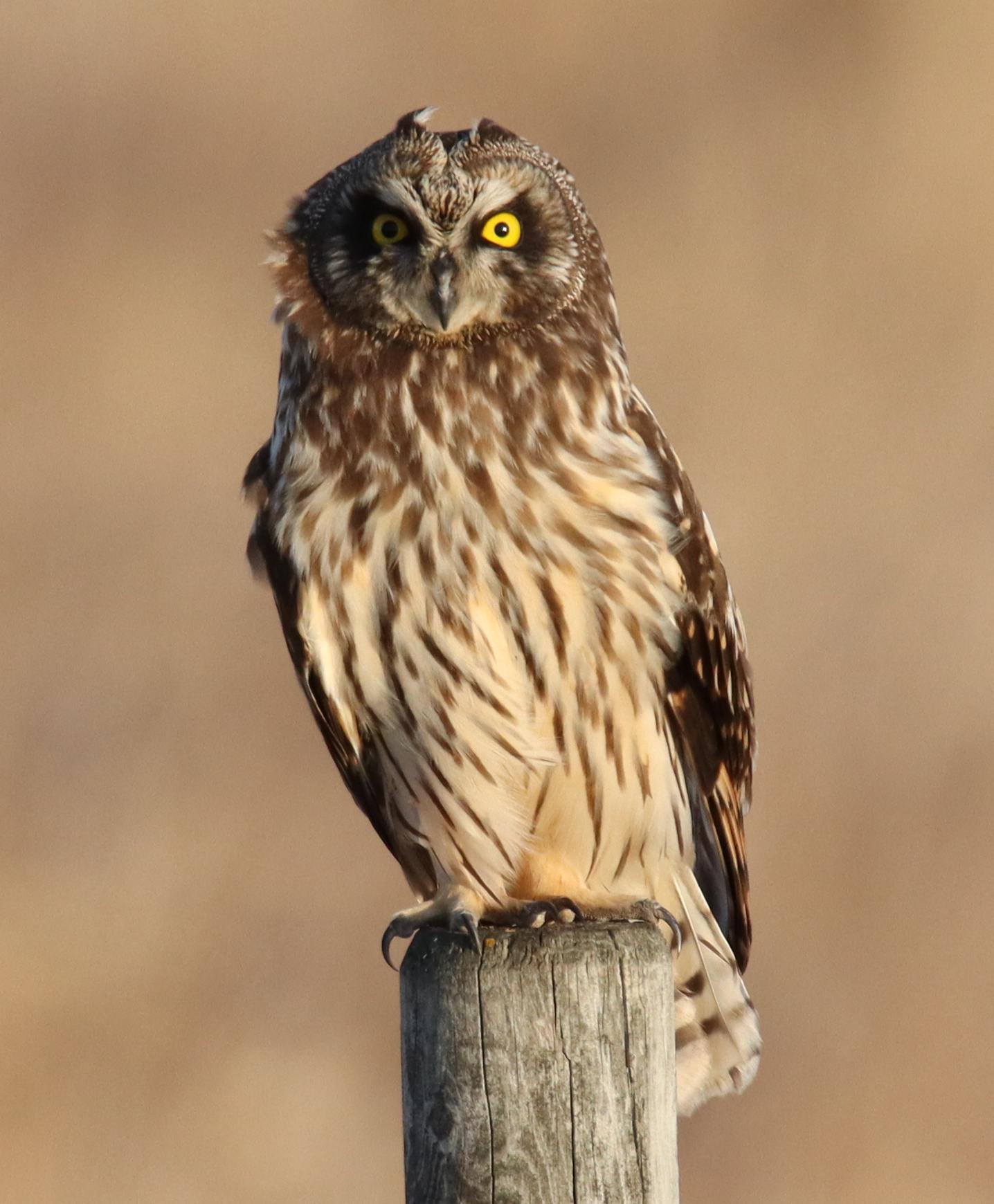
A surprise Short-eared Owl brought a total of 3 to my attention Friday evening. This individual has very dark facial plumage, which isn’t rare, but I couldn’t find information that would explain if this a younger bird or if it is just a color trait among some Short-eared Owls.
|
Many new birds of spring continue to appear each week, while others have moved farther north after a short or extended stopover. During the past week it’s been exciting to see the first Piping Plovers, Semipalmated Plovers, Wilson’s Phalaropes, Long-billed Dowitchers, a Horned Grebe, Eared Grebes, Western Grebes, and finally, pairs of Wood Ducks showed – not in my area, but east of the capitol city of Bismarck where I’m betting they have been on hand for some time. The plovers were especially exciting to see, and while Semipalmated Plovers are regular migrants during spring and late summer, Piping Plovers are not a given, but more likely to appear during spring. That’s not to say the phalaropes weren’t exciting, and it was interesting to note that the more colorful females arrived before males. Of course, I’m always a fan of grebes too.
Last Wednesday was a standout birding day as I searched for birds between home and Long Lake National Wildlife Refuge, then on to Bismarck. Still pumped up about Hudsonian Godwits from the previous weekend, I was thrilled to find the super-migrants at 2 different locations on my way to Long Lake Refuge. First, it took me a moment to notice a single male north of home among a group of 7 larger Marbled Godwits to start my birding drive. When I reached the lake where I observed the partial-albino Gadwall 2 weeks earlier, in an attempt to relocate the unique leucistic duck, I was on high alert as I checked the variety of ducks for a mostly white one.
There were also a couple pairs of Giant Canada Geese, the first Horned Grebe and Wilson’s Phalarope of spring, a pair of Willets, and a flock of small sandpipers. As I identified the small sandpipers as Baird’s, I looked ahead and saw 2 godwits – Hudsonian Godwits – close to the road, standing out of the shallows, showing the full length of their legs as they stood upright in full sunlight, woo-wee. There were actually male 5 Hudsonian Godwits that showed a lot of interactions between one another, and offered more photo opportunities.
There was an attendant male Ferruginous Hawk at each of the nests I checked on the way to Long Lake, where I expected to see the first Western Grebes of spring. There were indeed a few Westerns on hand, along with the first Eared Grebe and, finally, a pair of Wood Ducks, the first of spring. But the big surprise was finding a group of 4 Piping Plovers on a lonely gravel road that divides Long Lake! Pipers are very hard to find in the interior of the Northern Plains away from the sandbars of the Missouri River where they nest when conditions are right.
This was probably another rare chance sighting of the species during a migration stopover, and the Piping Plovers were busy working the gravel and sand for small insects, and grabbing a worm when possible. These plovers are so small and so cryptically colored that anyone but a birder would likely not even notice them. When you have a chance to see Piping Plovers close, the thing that’s obvious about them is how cute they are! And how small they are. I felt so lucky to have a chance to observe these little shorebirds and photograph them surrounded by the sights and sounds of birds and the fresh air of spring.
Between Long Lake Refuge and Bismarck, McKenzie Slough is a birding hotspot that showed more birds, including 2 separate pairs of Tundra Swans, late migrants it seems now, plus many White Pelicans, a few more Western and Eared Grebes, an abundance of ducks, a few Northern Harriers on the hunt, some White-faced Ibis, Great Blue Herons, Giant Canada Geese, and 2 large groups of Franklin’s Gulls feeding on the wing above the marshland. One more stop east of Bismarck: Dogtown Marsh, where the usual variety of ducks included 3 more pairs of Wood Ducks and a pair of Canvasbacks, suggesting the promise of broods to photograph during July.
Friday was the next sunny day, the last one until Tuesday, and it inspired an extended outing in search of new birds, which was punctuated by a quick start. Checking the pond where the lone Hudsonian Godwit was feeding Wednesday, just 2 miles north of home, a pair of American Avocets caught my attention first, but a much smaller shorebird held my attention – a Semipalmated Sandpiper, the first of spring, although it turned out there were 2 Semipalms.
The other Friday standouts included a male Ferruginous Hawk perched near a new nest I haven’t seen before – but that’s cuz it’s a new nest, unlike the others I check back on year after year, a fine new addition about 25 miles west of home. Then, as the sun was waning, I was caught a bit off-guard when I realized there was a Short-eared Owl perched on a roadside fencepost. Farther down the road I took a U-turn and returned with the hope of photographing the owl, which worked pretty well until a loud truck roared by and sent the owl fleeing.
I followed the owl’s flight with binoculars and to my surprise, a second owl swept upward from the tall grasses several hundred feet away to approach the first; and that’s when I sighted a third owl perched on another fencepost about a quarter-mile from the road. It’s been quite a while since I last observed a Short-eared Owl; likely when there was snow on the ground in February. But the surrounding habitat at this locale is perfect for Short-eared Owls to hunt in and even nest in the area. I refer to this primo grassland and marsh habitat as “hawk valley,” due aggregations of Northern Harriers and Rough-legged Hawks I’ve encountered there, plus regular summer Swainson’s and Red-tails. Perhaps I need rethink that name.
Well, beyond my northern realm, the last week of April brought a variety of migrating songbirds to my attention as 23 species of warblers and 5 species of vireos were reported in New York City at Central Park. A Baltimore Oriole was also reported as far north as New Hampshire, and a Ruby-throated Hummingbird was reported in Massachusetts on Saturday morning. So be aware, get those hummingbird and oriole feeders out and enjoy the parade of songbirds that will reach you soon, if it hasn’t already started in your area. May will certainly provide us all with an exciting month of birding experiences!
Article and Photos by Paul Konrad
Share your bird sightings and photographs at editorstbw2@gmail.com